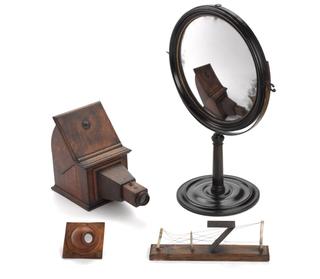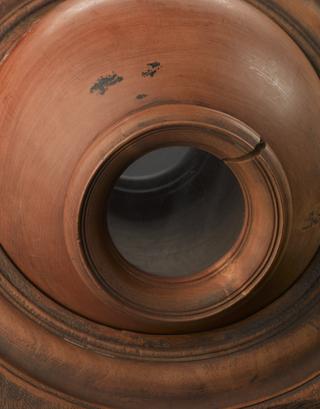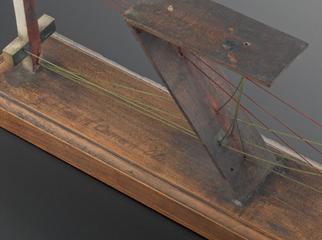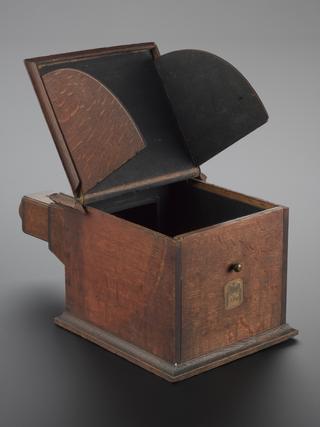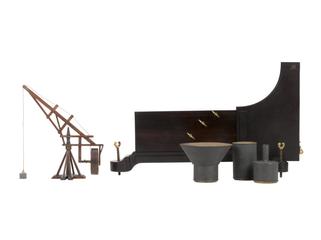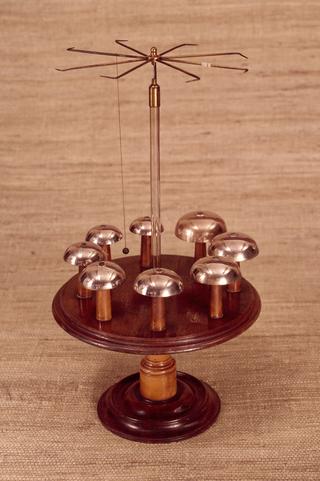
Set of 'Artificial' Magnets, c. 1762
- maker:
- George Adams




Six bar magnets, in case with keepers.
Set of six artificial magnets, in case, 1762. 'Artificial magnets', introduced in 1750, were known as such to distinguish them from the natural magnetite lodestones which had been in use for several centuries. These bars were made by George Adams, instrument maker to King George III. They were used to show attraction and repulsion, demonstrate lines of force with iron filings, and pick up soft iron balls.
Details
- Category:
- King George III
- Object Number:
- 1929-98
- Materials:
- steel, mahogany and paper (fibre product)
- Measurements:
-
overall box: 35 mm x 316 mm x 156 mm, 3.66 kg
overall magnet (each): 20 mm x 269 mm x 11 mm,
- type:
- magnets and demonstration equipment
- copyright:
- Unlinked Name
- credit:
- King's College, London
